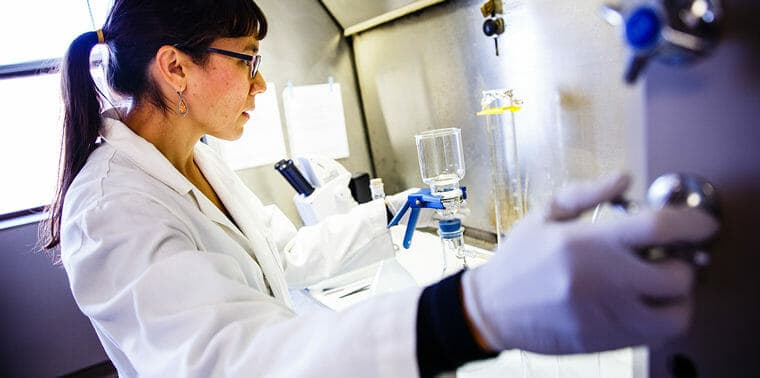Photography by Mark Brown, courtesy of the University of Minnesota School of Public Health
It’s 7:48 pm on January 8, 2018, and rain is quenching San Mateo, California’s parched suburban streets. I park my car and don my waterproof jacket and pants, yank on knee-high plastic rain boots, and trudge over to Carolynn Box, science programs director for the 5 Gyres Institute, and Diana Lin, environmental scientist with the San Francisco Estuary Institute (SFEI).
Standing on a footbridge over San Mateo Creek, we are all wrapped, head to toe, in foul weather gear — all of it plastic in one textile form or another.
Box plunges a rigid plastic tube into the swiftly moving creek as Lin turns on a pump. Making a loud wamp-wamp-wamp sound, like a sewing machine, it slurps up a 5-gallon (19-liter) sample of water from the swiftly moving stream. A passerby inquires what we’re up to. Someone quips, “We’re bottling water to sell it!” Everyone chuckles.
In fact, the creek sampling is part of a two-year research project in which SFEI and 5 Gyres are analyzing microplastics — synthetic fragments 5 millimeters (0.2 inches) or smaller — in […]
Full article: Humans, fish and other animals are consuming microfibers in our food and water
More about microplastics:
Microplastics found in more than 90% of bottled water, study says
Proving Terrible For the Marine Life: Microplastics
Microplastic contamination: Plastic fibres found in tap water around the world
Why microplastic debris may be the next big threat to our seas


